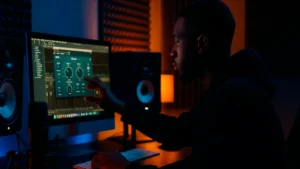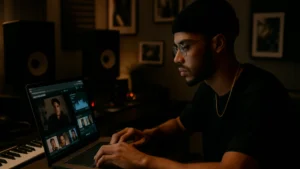
Why Artist Branding Is Your Most Powerful Marketing Strategy
Why authentic artist branding is the most powerful way to stand out in today’s industry. Build connections with fans through your sound
Learn how to record rap vocals at home with pro sound, even if you’re on a budget. Essential gear, vocal tips, room setup and mixing tricks.

If you’re serious about your music career, learning how to record rap vocals at home is a game-changer. Recording at home gives you full control over your sound, saves you money on studio sessions, and lets you create more music, more often.
With the right tools and a smart setup, you can achieve studio-quality results without ever leaving your room.
You don’t need to break the bank to get a solid home studio setup. Here’s what you really need:
No matter how good your mic is, your room can make or break your vocal quality. Here’s how to treat your space:
Even a small effort in treating your space can greatly improve how you record rap vocals at home.
Recording is more than pressing “record.” Use these tips to get clean takes:
These techniques are used by pros.
Once you’ve recorded, it’s time to polish your sound:
Treating your vocals properly is key if you want to sound professional.
These days, there’s no excuse. Artists at every level have learned how to record rap vocals at home with clarity, impact, and emotion — all without a commercial studio.
Invest in good gear, focus on your technique, and treat your space with care. Your future fans won’t know (or care) where you recorded — only how good it sounds.
🔗Need beats that sound industry-ready?
Download free beats with clear licensing and start recording today at Beats by GorJah.

Why authentic artist branding is the most powerful way to stand out in today’s industry. Build connections with fans through your sound

Discover essential reverb mixing tips every independent artist should know. Learn how to add depth to your vocals without muddying your mix.

Why visual branding for musicians is essential in today’s industry? How to build a consistent image, your identity, and boosts your career.

Learn how to create an electronic press kit for musicians that attracts gigs, press, and brand deals and grow your music career